
Original Link: https://www.anandtech.com/show/1242
This week, we are relaunching our Buyer's Guides due to popular demand, and honestly, we've been wanting to bring them back for a while. We've reworked our format a little bit and have added an overclocking guide for enthusiasts. Every week, you'll see a new Buyer's Guide, and after the end of each month, we will retool our guides to reflect the new hardware and pricing of that particular time period. Here's the basic format of our Buyer's Guide:
Week 1: Budget System
Week 2: Mid Range System
Week 3: Cutting Edge System
Week 4: Overclocking System
For every component that goes into a computer, we pick our favorite piece of hardware as well as our runner-up piece of hardware. We've added runner-up hardware picks to our guides because it allows AnandTech to recommend a wider variety of hardware (especially for those willing to spend a little more than what we budget for a particular system). At the same time, we can be assertive enough with a first place recommendation so that new buyers aren't indecisive or confused about what to purchase. Most of the prices listed for the hardware that we recommend can be found in our very own RealTime Pricing Engine. Any prices not found in our engine can be found on pricewatch.com. In addition to our Buyer's Guides and RealTime pricing engine, we suggest that you peruse our Price Guides so that you are not only informed about the best hardware for your computing needs, but also where to find the best deals on that hardware.
We are always taking suggestions on how to improve our Buyer's Guides. If you feel we are not including a wide enough variety of systems in our guides, please let us know and we can see if it warrants an additional weekly Buyer's Guide.
Budget Computing
Our Budget systems are mainly concerned about pricing, with reliability a close second consideration. While we certainly take into account performance, we do not consider it a vital part of building a budget system; it is merely something that is considered when price and reliability have been established. This is not to say performance is ignored because that is just not the case. We like to think that we will end up picking a balanced array of hardware based on price, reliability and performance, in that order, for today's Budget Buyer's Guide.Read on to find out more.
Budget System
CPU

Recommendation: AMD Athlon XP 1800+ OEM (no heatsink)
Price: $49 shipped (add $10 for cooling)
These days, it's nearly impossible not to recommend an AMD Athlon XP processor for a budget system. The prices on low-end Athlon XP processors are just too good. Knowing this, we are of course going to recommend an Athlon XP processor for today's budget system, specifically the 1800+ version running at 1.53GHz. This processor is no performance slouch; budget users who surf the Internet, perform general office-related tasks, and those who play the occasional video game will experience very few (if any) slowdowns with an Athlon XP 1800+ processor. For more information on exactly how your 1800+ might perform, you can check out AnandTech's very own Budget CPU Shootout from last December. Of course, you can't forget your CPU cooler, and in this case, pretty much any AMD approved cooler will do. The Cooler Master DP5-5G11A is just $10 shipped from several online vendors.
Runner-up: AMD Athlon XP 1900+ OEM (no heatsink)
Price: $55 shipped

The Athlon XP 1900+ (1.6GHz) runs just 66.67MHz faster than the recommended Athlon XP 1800+ (1.53GHz) for only $5 more. However, the 67MHz bump in core clock speed will likely end up being almost completely unnoticeable in any application that a budget user uses. However, if you have $6 or so to spare, the 1900+ will fit perfectly as your budget processor. The Cooler Master DP5-5G11A will work just fine with this processor as well.
Motherboard
Recommendation: ASUS A7N8X-X (nForce2 400)Price: $69 shipped
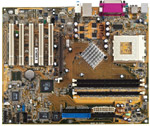
It's always tough to generalize which motherboard is right for users when so many different people have such a varying range of needs in a motherboard. But after some extensive research, we came to the conclusion that the A7N8X-X has the right combination of features, price, and reliability that budget users demand. It's hard to go wrong with a $69 price tag and the performance that comes with an NVIDIA nForce2 400 chipset. Of course, the reliability of ASUS motherboards is well known around the industry. No motherboard manufacturer is perfect, though, and even ASUS produces a lame duck now and then. However, after having tested at least 3 different versions of ASUS' nForce2 motherboards over the last 12+ months, not to mention the fact that this article is being written on a computer based on the ASUS A7N8X-X motherboard, we can confidently say that you aren't going to encounter many motherboard-related problems.
Runner-up: ABIT KV7 (KT600)
Price: $66 shipped
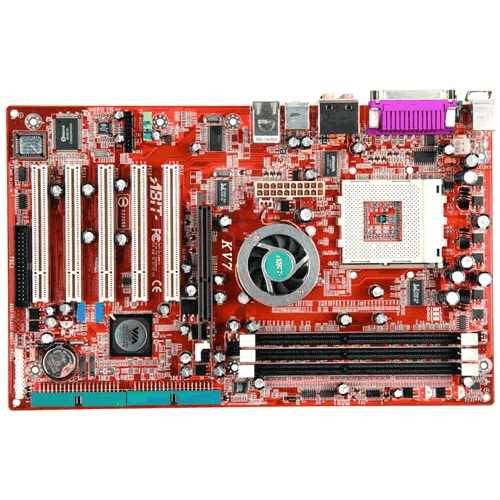
We took an in-depth look at the KV7 last September, where we basically concluded that it was a solid budget board with good features and average performance. Performance still hasn't changed much since then, though BIOS updates to the KV7 has increased performance slightly. In addition, the price of ABIT KV7 motherboards, and KT600 motherboards in general, has gone down significantly since then, nearly 20% in fact. These two developments, in addition to the fact that the KV7 was already an excellent budget board, convinced us that the ABIT KV7 was good enough to be named this week's runner-up in the motherboard category.
Memory
Recommendation: 1 X 256MB Crucial PC2100 (DDR266) modulePrice: $35 shipped

Choosing the right type of memory for a budget system usually isn't too difficult nowadays. PC2100 speeds and CAS 2.5 latencies are common measurements of performance for memory modules, and are virtually the only two important performance-related factors when deciding to purchase memory, besides the actual size of your memory module (256MB is necessary for Windows XP). But if you can't spend a lot of money, performance should be the last thing on your mind when choosing memory. Price and reliability should be your only real considerations, in that order. For whatever reason, Newegg has stellar prices on Crucial memory modules, specifically the 256MB PC2100 kind that we are recommending here today. There are several other vendors in the U.S. selling 256MB Crucial PC2100 memory modules, but for more like $40 instead of $35, which is why we recommend buying from Newegg in this particular case. Though it should be noted that Nutrend and E-Wiz are selling 256MB Crucial PC2100 modules for under $40, they still cost more than Newegg's $35 shipped.
Anyway, with a $35 price tag, a reliable manufacturer in Crucial, and a lifetime warranty, there's simply no way you can go wrong with this memory.
Runner-up: 1 X 256MB Kingston PC2100 (DDR266) ValueRAM module
Price: $40 shipped
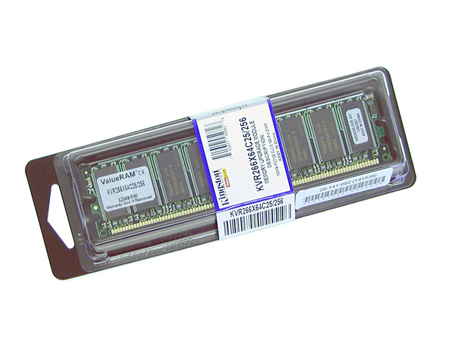
Newegg, Nutrend, and ZipZoomFly are three great vendors from which to buy Kingston memory. All three vendors are selling their 256MB Kingston PC2100 ValueRAM modules for roughly the same price, $40 shipped, give or take a dollar or two. In case you're curious, we're recommending PC2100 (DDR266) today because the Athlon XP 1800+ processor that we recommended runs at that exact same speed in terms of its FSB (Front Side Bus), 266.666MHz DDR to be exact. Running your FSB and main memory at the same speed is more often than not going to yield the best performance results, and is exactly why we recommend PC2100 instead of PC2700 or PC3200, not to mention that both of those memories are more expensive for zero performance gain anyway.
Video
Recommendation: 64MB Sapphire Radeon 9200Price: $58 shipped
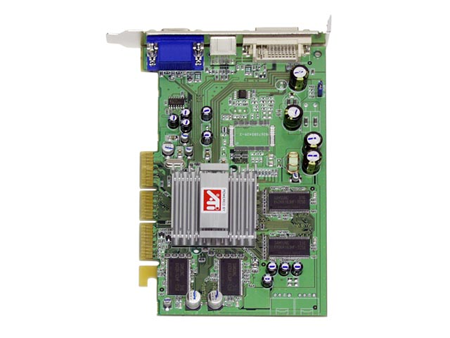
The Radeon 9200 is the AGP8X version of the Radeon 9000. Be sure that you're purchasing a Radeon 9200 with a 128 bit memory interface and not the Radeon 9200 video cards that are floating around out there with a 64 bit memory interface (also known as the "9200SE"). Vendors may or may not make this information clear when advertising their 9200 video cards, as the 128 bit 9200 is significantly faster than the 64 bit 9200 in 3D gaming.
As far as the onboard video memory size is concerned, 64MB should be more than enough for the majority of video games out there, and certainly enough for budget users. Additionally, ATI's current series of Radeon video cards continue to maintain excellent 2D IQ standards, and this will be likely more important to buyers on a tight budget than gaming performance. So don't fear, the clarity and sharpness of your 2D text will be excellent with a ATI/Sapphire-made Radeon 9200 series video card.
Runner-up: 64MB Sapphire Radeon 9200SE
Price: $41 shipped
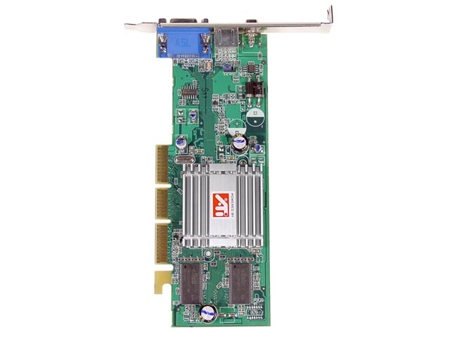
The only other possible budget card that we can recommend at this time would be ATI's Radeon 9200SE, which is exactly what we just recommended above, save for the fact that the SE has a 64 bit memory interface instead of a 128 bit memory interface. Again, the difference going from 64 bit to 128 bit memory interface is noticeable in terms of 3D performance improvement, depending on what games you play. But if you could care less about gaming, a 9200SE isn't a bad way to save $17.
Monitor
Recommendation: Samsung SyncMaster 17" Flat-Tube (model 763MB)Price: $146
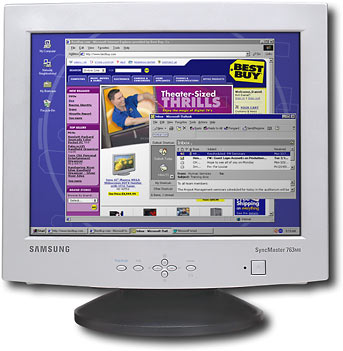
Samsung's SyncMaster series of monitors are very popular for price conscious buyers. With a 0.20mm dot pitch, 1280x1024 max resolution, and 3-year manufacturer warranty, you're getting a good bang for your buck monitor. You can pick this monitor up at your local Best Buy if you don't feel like waiting several days for your monitor to arrive in the mail.
Runner-up: NEC Diamondtron 17" CRT (model FE771SB)
Price: $175
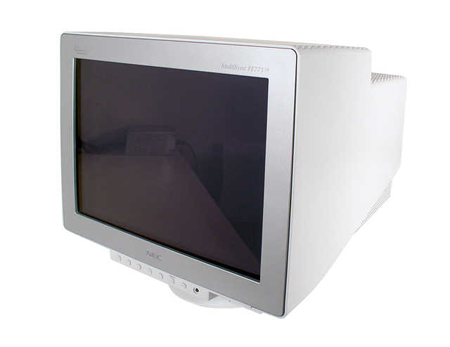
This is one of the lower end models of the famous Diamondtron series of monitors. Max resolution is just 1280x1024 and dot pitch is a mediocre 0.25mm. However, the clarity and viewable area (16") of this monitor are better than the Samsung SyncMaster 763MB, and at just $30 more. A nice little upgrade if you're willing to spend the extra dollars.
Computer Case
Recommendation: CaseEdge TS1 Mid TowerPrice: $40 shipped
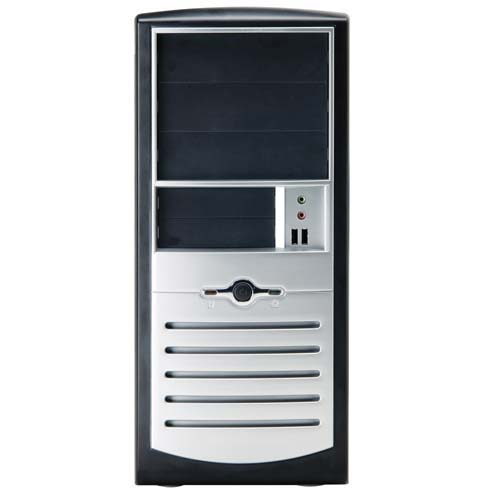
You can purchase this case online at www.pcclub.com or go to a local PC Club to pick it up. Not only is the black and sliver edition of this case very good looking, but the setup is very easy to use and convenient in general. For one, the motherboard mounting screws come installed in their proper holes, a welcome change from having to screw them in by hand. Secondly, the hard drive and optical drive bays contain plastic clips that allow you to install your drives simply and easily without screws. All in all, this case basically comes completely "preinstalled", and even includes a 300W PSU (power supply unit). Any AMD or Intel approved power supply will do for a budget system considering how little power a system like this draws, but if you're feeling extra cautious for future upgrades, picking up a Sparkle 300W PSU is a fine choice. The price of a Sparkle 300W PSU is about $21 shipped online.
Runner-up: Foxconn Super Case 100-G2-P4 Mid Tower
Price: $45 shipped
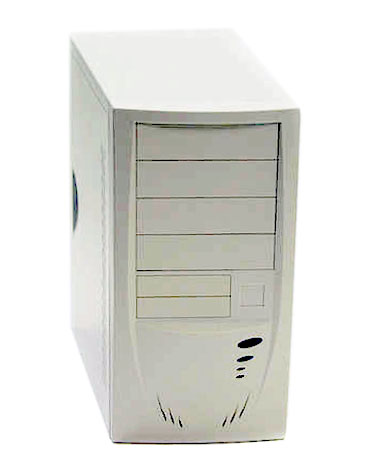
While this case isn't quite as easy to use or as aesthetically appealing as the CaseEdge TS1, it is still a fine computer case with all the space you'll need for your budget system. It comes with an AMD approved 300W PSU, but as we said before, you can always opt for a better 300W power supply if you feel like you need an especially good power supply for future upgrades.
In the end, as long as you purchase a case that accepts an ATX motherboard, the choice of computer case is completely up to you, the consumer. There are many aesthetically appealing computer cases out there - don't let our preferences stop you from exploring other computer cases online or at a local retail outlet, like PC Club or Best Buy.
Sound Card
Recommendation: Onboard soundPrice: $0
There is no need to waste money purchasing a separate sound card with a budget system like this one, so obviously, we are going to suggest the onboard sound that comes with the ASUS A7N8X-X we recommended as the motherboard of choice today. Integrated sound is courtesy of Realtek's ALC650 codec, which is a standard 6-channel solution that will fit basic Windows, gaming, and music requirements.
Runner-up: Onboard sound
Price: $0
Again, since we placed the ABIT KV7 as runner-up motherboard for today, we're suggesting that you use the sound onboard the KV7. The KV7 utilizes VIA VT1616 codec. This codec is suppose to be especially good, though you'll likely not notice the difference in comparison to the ALC650.
Speakers
Recommendation: Creative Labs SBS270 2.0 SpeakersPrice: $20 shipped

Speakers are a basic requirement for a budget system, but aren't that important overall. However, Creative Labs makes a great pair of 2.0 speakers, dubbed the SBS270. These are excellent budget speakers for users who also want to have at least decent sound quality for video games and music listening. It also comes with a headphone input. There's really no runner-up in this category because of the fact that any solid pair of 2.0 speakers from a reputable manufacturer will do for this kind of system.
Networking
Recommendation: Onboard networkingPrice: $0
As we did with sound, we are recommending the A7N8X-X's onboard Ethernet solution, powered by Realtek's 8201BL controller. Pretty much every onboard network controller is the same nowadays, so there's usually no need to worry about Internet speed/download issues.
Runner-up: Onboard networking
Price: $0
The ABIT KV7's onboard Ethernet controller is powered by the VIA VT6103 controller. This is virtually identical to the Realtek controller onboard the A7N8X-X in the sense that it's a standard 10/100 Mbps-capable solution. Overall, it'll serve your needs just fine.
Hard Drive(s)
Recommendation: Western Digital 400BB (40GB) 7200RPM (2MB cache)Price: $57 shipped
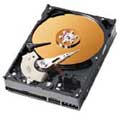
Western Digital continues to make well priced budget drives that aren't noticeably slower than the 5400RPM variety. Depending on what type of office tasks you perform, a 7200RPM drive like the Western Digital 400BB is going to be faster than pretty much any 5400RPM hard drive on the market, and for not much more money. 40GB should be more than enough if you're just storing mostly Outlook or Word/Excel/PowerPoint documents, a few games, and some MP3's. Of course, as we preached at the beginning of this guide, reliability is always a big deal when you're talking about important data, and luckily, this particular series of Western Digital drives has gained wide acceptance around the industry as extremely reliable drives. We, here at AnandTech, share this same sentiment, as we have used several WD drives (Caviar series) not only for our personal systems, but our test systems as well.
Runner-up: Western Digital 400JB (40GB) 7200RPM (8MB cache)
Price: $64 shipped
Like the 400BB, the 400JB is a 40GB 7200RPM hard drive. The only difference is in the size of the cache (or buffer) that each drive uses to store data. Basically, the 400JB is going to be faster than the 400BB because it can store more data in its cache (8MB instead of just 2MB) for use later on in a fetch sequence, and overall that gives your system a performance boost. In general, however, the difference isn't huge, but definitely does shave off some time in common everyday tasks like unzipping files or installing an application, for example.
Optical Storage
Recommendation: Sony 52x32x52 CD-RWPrice: $32 shipped
There aren't too many differences between CD-RW's nowadays, save for reliability among various manufacturers. For the most part, Sony has done a good job with their high-end CD-RW drives and we have had great success with them in the past, which is why we decided to recommend them today. At $32 shipped, you really can't go wrong with this solution.
Runner-up: Lite-On 52x32x52 CD-RW
Price: $36 shipped
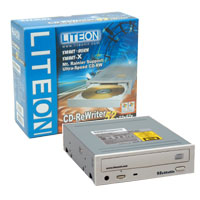
While Lite-On is slightly more expensive than the Sony CD-RW that we recommended, Lite-On's reputation for reliability is just about as good. We've tested and used multiple Lite-On drivers, from 24X to 52X recently and many more before then with great success. Plextor has gained wide acceptance as the gold standard for optical drives (reliability especially), and specifically CD-RWs, but their prohibitive pricing makes it an unrealistic choice for budget users, which is why we're recommending Sony and Lite-On drives instead.
UPDATED February 19th, 2004
Budget System Summary
| Hardware | Component | Price |
| CPU & Cooling | AMD Athlon XP 1800+ | $59 |
| Motherboard | ASUS A7N8X-X | $69 |
| Memory | 256MB Crucial PC2100 (DDR266) | $35 |
| Video Card | Sapphire 64MB Radeon 9200 | $58 |
| Monitor | Samsung SyncMaster 763MB | $146 |
| Computer Case | CaseEdge TS1 | $40 |
| Sound Card | Onboard Realtek ALC650 | $0 |
| Speakers | Creative Labs SBS270 2.0 | $20 |
| Networking | Onboard Realtek 8201BL 10/100 controller | $0 |
| Hard Drive | Western Digital WD400BB (40GB) | $57 |
| CD-RW | Sony 52x32x52 | $32 |
| Bottom Line | - | $516 |
When all is said and done, $516 is the final price of our system, not including any money you'll spend on software (Windows XP Home or Professional, Office, etc.) or a keyboard and mouse.
This is definitely one of the best budget systems currently available on the market. By no means is it close to the fastest system in the world, but it is definitely one of the cheapest and most reliable you can build while still being a good performer.
Now go build your system and let us know what you think.







